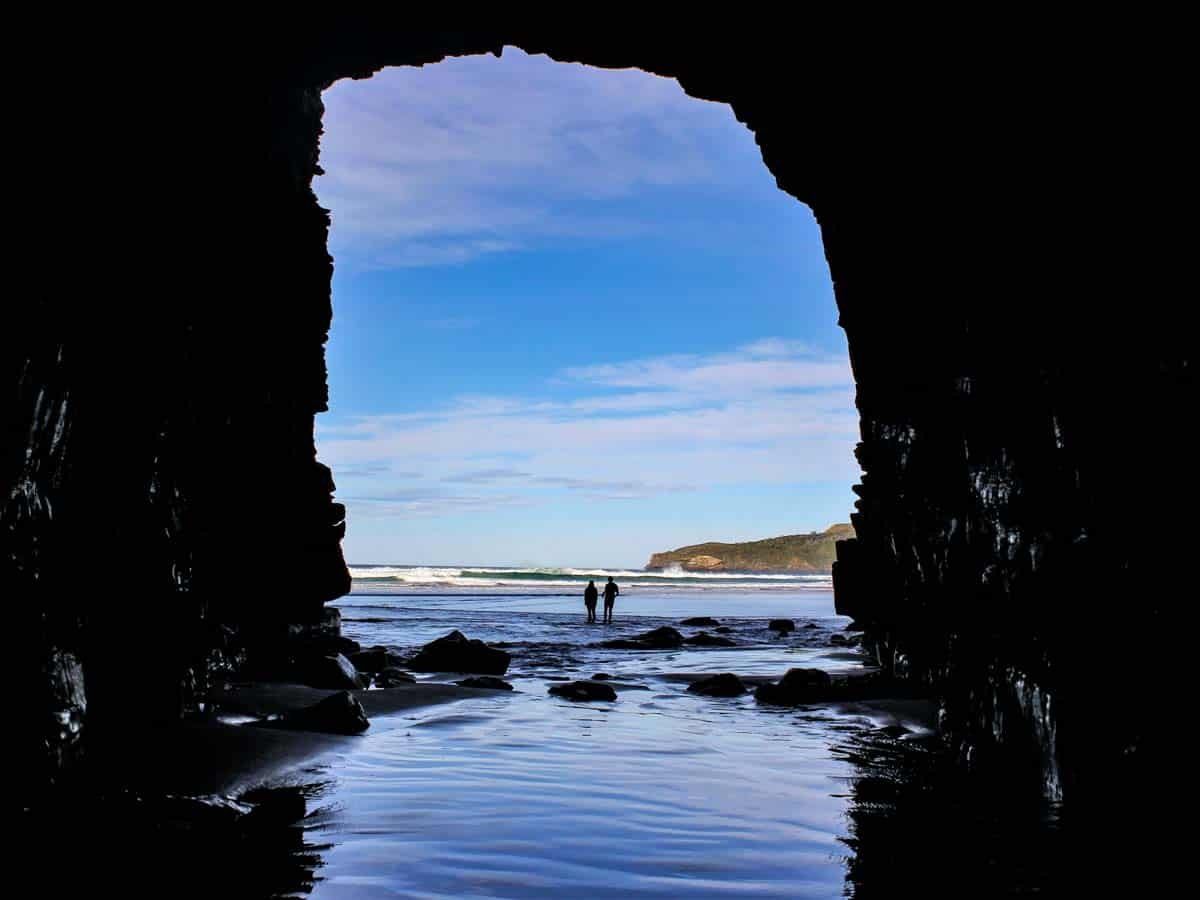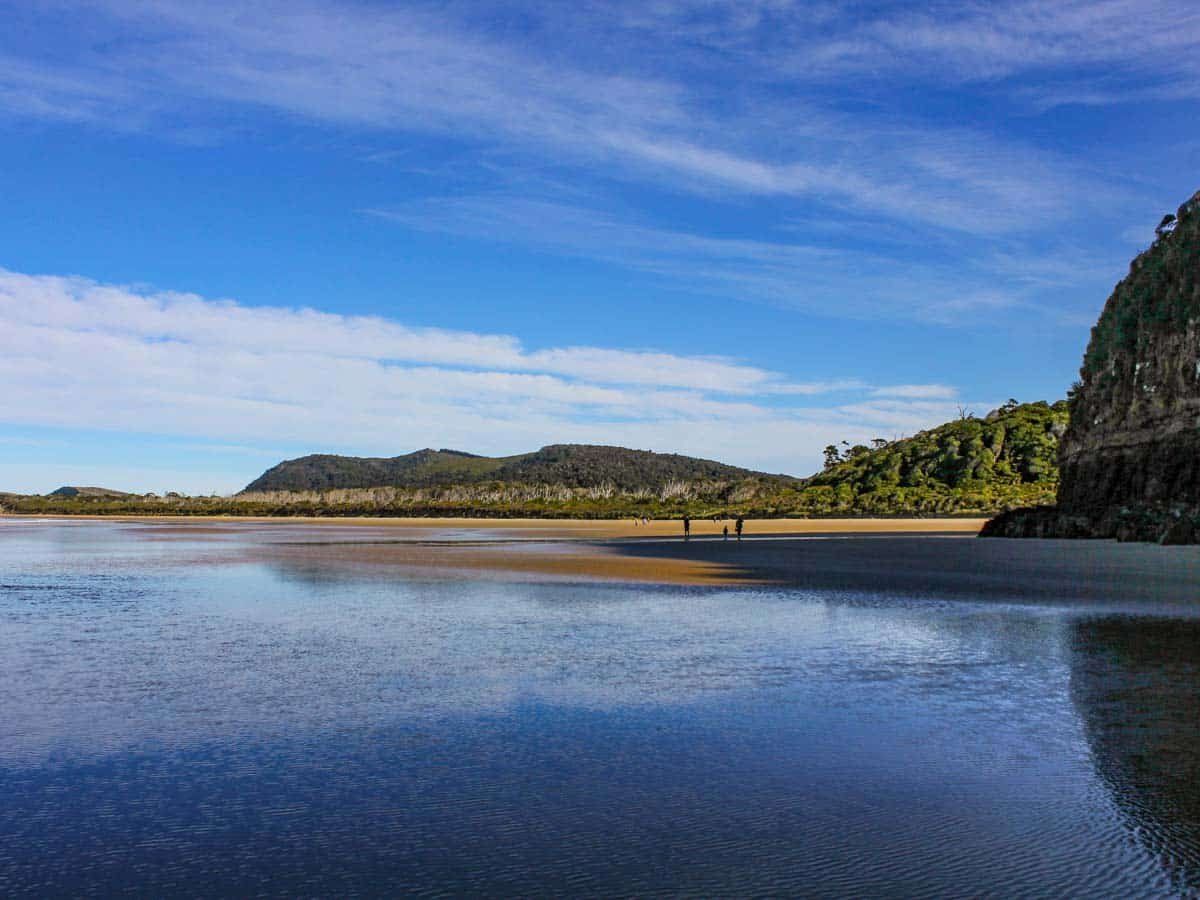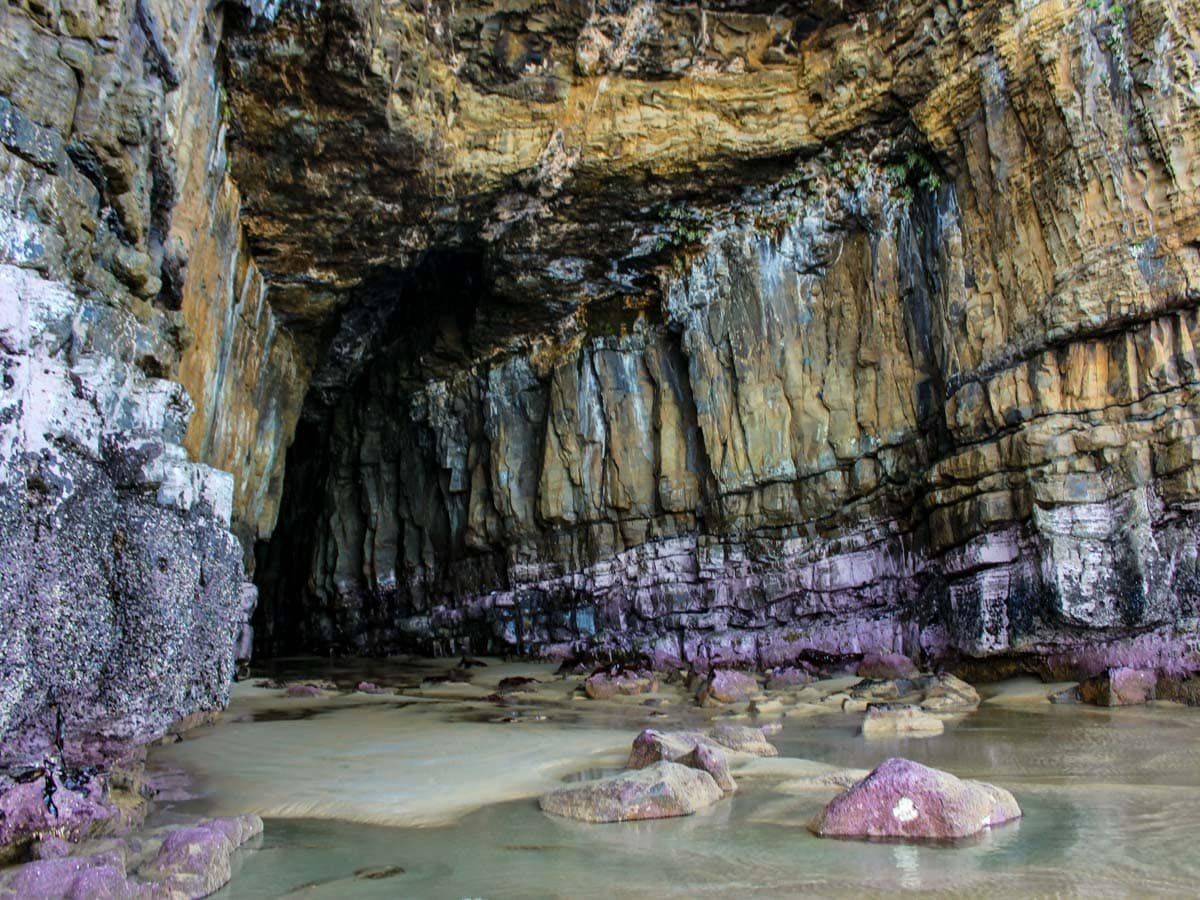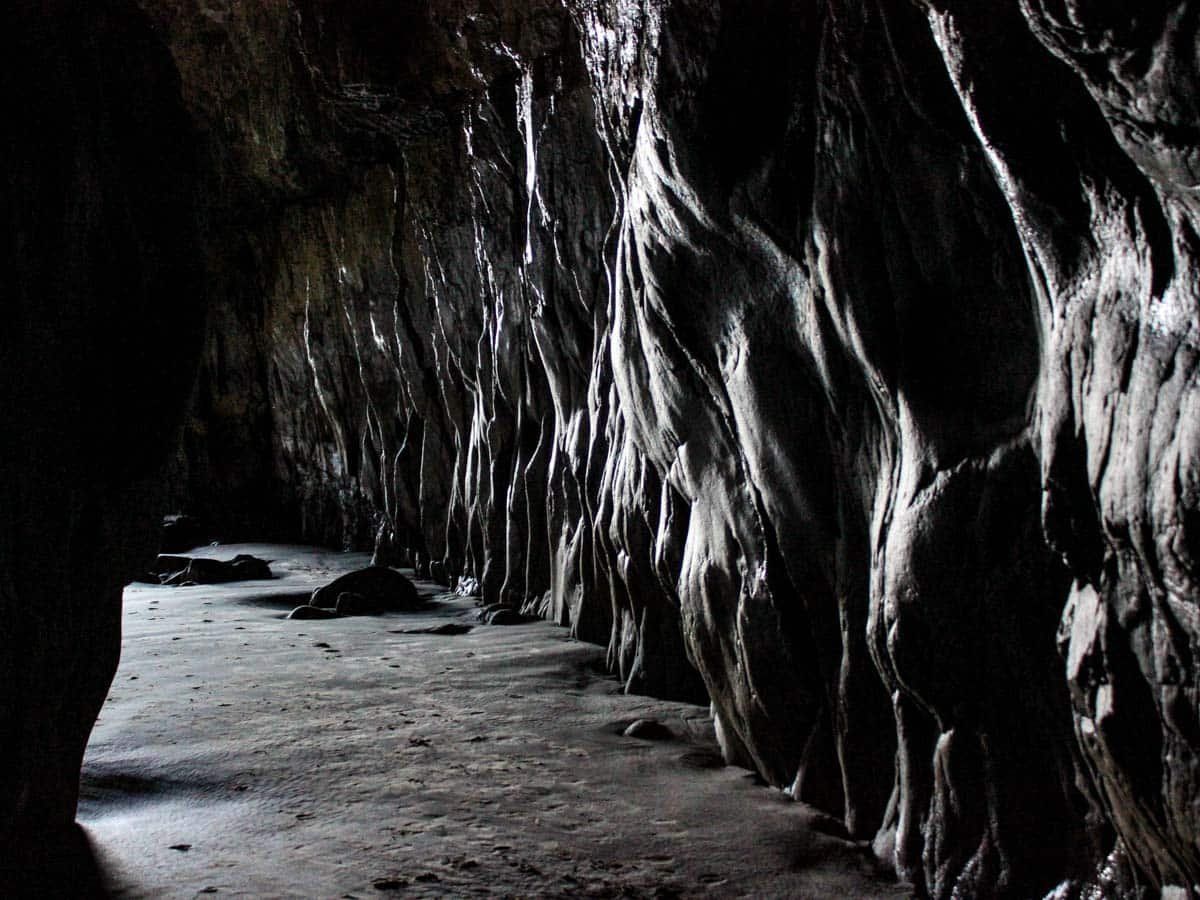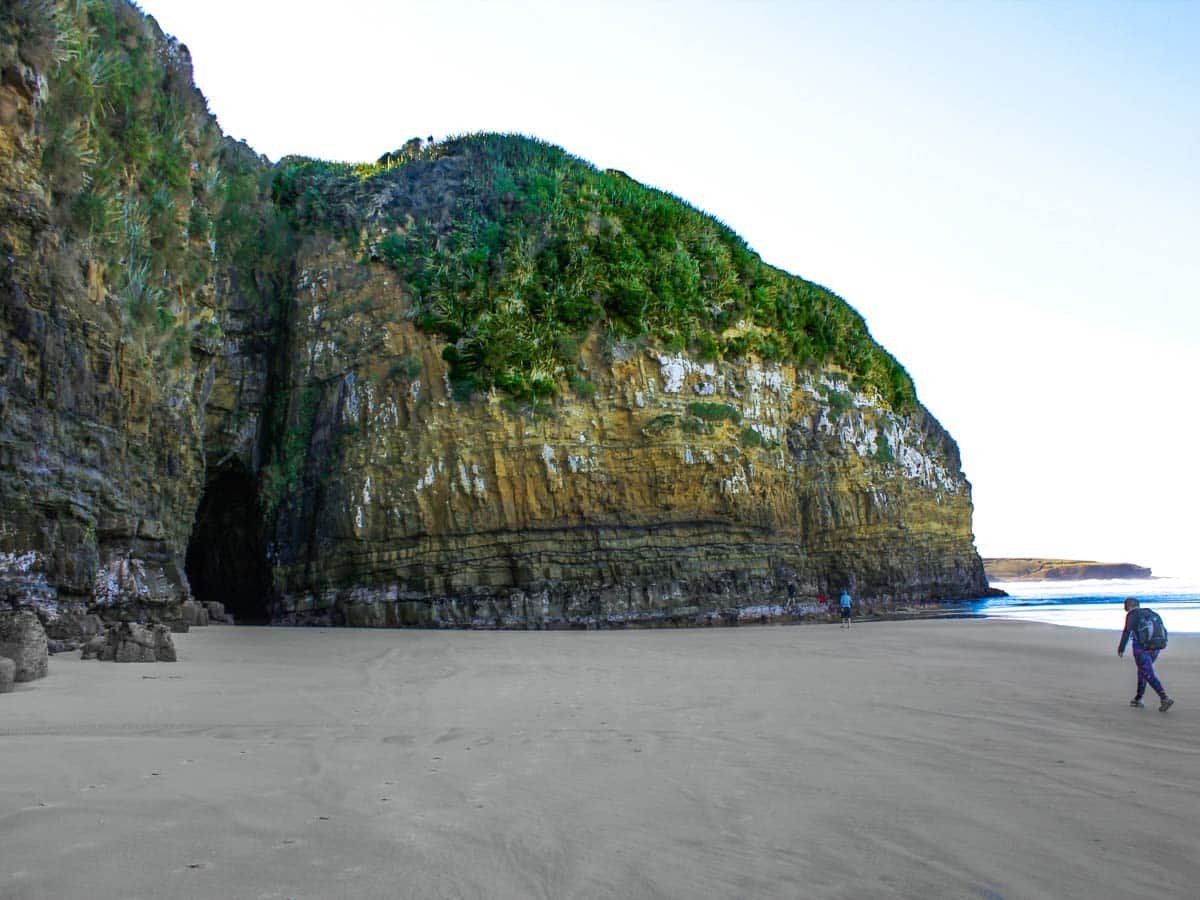Cathedral Caves are two huge connected caves at the north end of Waipati Beach in the Catlins. They can be accessed via a 1 km walk through the ancient native forest and across the beach from a car park at the end of the 1 km access road. There is a modest fee, and access is restricted to low tide, which is only confirmed 24 hours in advance as the weather can influence access. The status is provided on a large board at the start of the access road, but it is best to check the website before you visit.
The cliffs around the caves are ancient, uplifted 160 million years old Jurassic sandstone. They were formed by the pounding of waves accessing fractures in the rock, leading to erosion and creating dome-like, up to 30-metre-high cave formations. They are some of the longest sea caves in the world at 200 metres. The cave entrances are 40 meters apart, but erosion eventually caused the caves to merge at the back, creating a V formation. Storms and currents influence the beach sand's movement, creating varying cave entrances with rocky pools or sandy floors.
The caves were known to Māori, including evidence of moa hunter activity predating 1500. However, Dr T.M. Hocken provided the name Cathedral Caves in 1896. He described the sound reverberations inside the caves and likened them to cathedrals.
The surrounding forest is an excellent example of the ancient Catlins rainforest. There is a broad range of podocarps - rimu, miro and tōtara, and rata and kamahi flowering trees. The forest is rich with tree ferns, ground ferns, and mosses, supported by the area's high rainfall. The birdlife is significant with kererū, korimako, tui, miromiro (tomtits), and riroriro (grey warbler). On Waipiti Beach, you may see a range of seabirds, pakake (sea lions) and kekeno (fur seals). Always maintain a distance of at least 10 metres.
An unusual feature of the land around Waipati Beach is ownership by a Māori Trust representing over 200 beneficial owners. In the early 1900s, the NZ government reserved 57,500 ha for descendants of Māori who had been adversely affected by land purchases in the 1840s and 1850s, about 4,000 people in total. Much of it was economically worthless hilly forests around the lower South Island and Stewart Island, such as Waipati Beach. In 1996, a separate trust was set up to manage 443 hectares, including the caves, much of Waipati Beach and the adjacent forest. The trust has over 200 beneficial owners focusing on maintaining the pristine environment. They ask that you take only pictures and leave only footprints.
The access road is off the Southern Scenic Route 37 km and a 40-minute drive southwest of Owaka. Rewcastle Road, with a commercial campground and access to Mclean Falls, is 1 km to the west of the caves access road, and the Tautuku Bay walks are a few km to the east.
